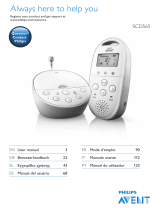
33
10 Storage and maintenance
The service life of the devices depends on careful use:
Important:
•
Remove the batteries from the baby unit if the unit is not in use for
an extended period.
•
You will get the maximum capacity from your battery if you run
down the battery at least once every 6 months. To do this, discon-
nect the device from the mains and run the battery down through
normal use. Then fully charge the battery up again.
•
The maximum battery capacity can only be reached after it has been
charged several times and is dependent on many factors (battery
state, ambient temperature, means and frequency of charging, etc.).
•
Protect the devices from knocks, damp, dust, chemicals, drastic
changes in temperature, electromagnetic fi elds and nearby sources
of heat (ovens, heaters).
•
If dirty, wipe the device with a soft, dry cloth.
•
Clean the device with a dry cloth. Do not use any abrasive clean-
ing products.
11 Disposal
For environmental reasons, do not dispose of the devices in the household
waste at the end of their useful life. Dispose of the unit at a suitable local col-
lection or recycling point. Observe the local regulations for material disposal.
Dispose of the device in accordance with EC Directive 2002/96/EC
– WEEE (Waste Electrical and Electronic Equipment).
If you have any questions, please contact the local authorities
responsible for waste disposal.


















